The Mining Risks - Julie Downard
I hope you’ve heard Grant Knowles’ radio interview with Paul Angus from Siren Gold. For me there was little in the interview to reassure me around the safety of our water. There was a lot of uncertainty around the process, and a lot of gaps. We put a number of questions to Paul Angus, but despite having openly invited further questions from the community in the interview unfortunately he wasn’t willing to answer them.

My name is Julie Downard. I have a background in Chemistry and Chemical Engineering. I’m not a mining expert but I’ve read a lot of papers and consents lately. I’m going to try to fill in some of the gaps Mr Angus left, as I take you through the risks to our wai, our whenua and our tangata, (our water, land and people) from the mining process.
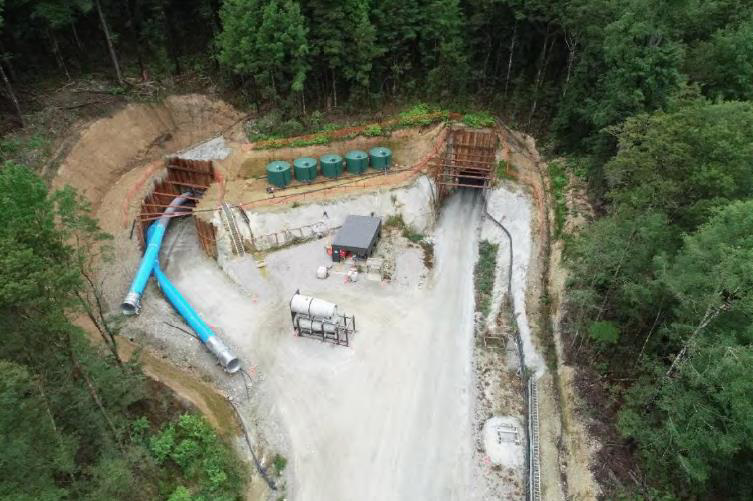
Snowy River mine entrance (south of Reefton, Grey river)
This is not the kind of mining where you find nuggets of gold lying in the rock, or even flakes. The gold is microscopic, bound together with arsenic and sulfur. To get it out you have to crush the rock to dust and then extract the gold using chemicals. If the mine is underground, they’ll be tunnelling to get to the gold seam. The door was left open for it to be open cast.
This is what we can expect. Snowy River is similar to what’s proposed here.
There will be blasting, to get the rock out.
Rock Crushing – 116 dB
The noise of the crushing – a heavy industrial operation – is 116 dB – like being in the front row of rock concert, power saw. 24/7. WHO safe daytime limit 55 dB.
The milled dust is highly toxic to touch and inhale.


Gold Flotation Concentrate
Chemicals are added to froth it all up so the arsenic/gold dust floats to the top. Those chemicals end up in the waste. Some are very toxic [sodium isobutyl xanthate].
The stuff that floats is the gold concentrate. The concentrate has most of the arsenic in it, and the lead and zinc. Someone else is getting that problem, if they ship it offshore as they say they will. Transporting this elsewhere is a high-risk activity. If there’s an accident – they drop one of the containers – there will be arsenic dust everywhere.
Flotation Waste.
Clockwise: Ballarat, Filter Cake, Canada
The rest of the arsenic (and lead) is in the waste, which looks something like this.
It contains rock dust, chemicals, sulphur compounds and 3700 tonnes of arsenic. More than enough to kill every person on the planet. If they find the seam is bigger then it’ll be even more. That stays here, in a waste heap, close to the processing plant, to save transport costs. Upper Tākaka. While they’re building the waste heap, they would need to keep this damp or contained to prevent it from blowing around.
Most of the rock they’ve extracted, is contaminated with arsenic. A huge amount to keep contained.
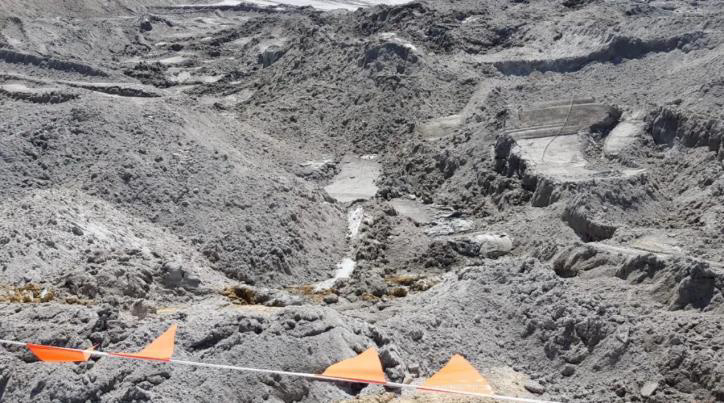
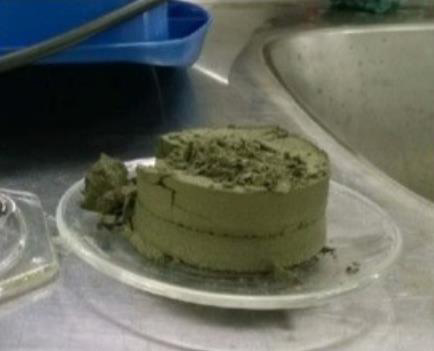
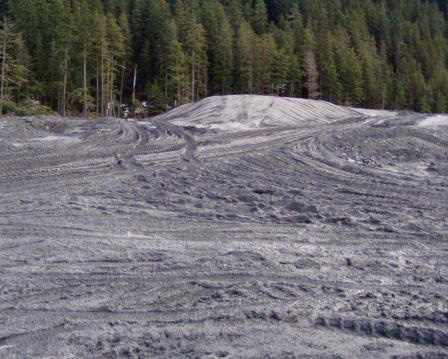
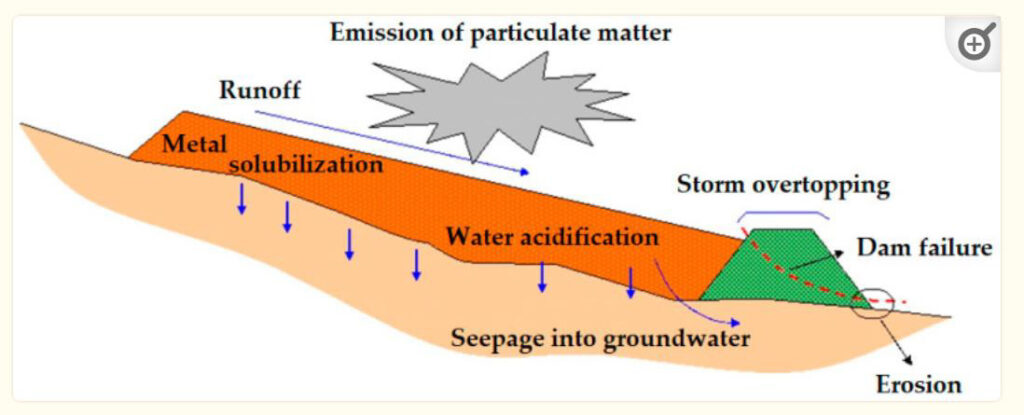
Potential Risks.
Over time that waste becomes acidic which allows it to leach into the ground. It will seep down into our aquifer.
The mining industry has a very bad record with acid seepage. It’s almost impossible to prevent or fix. By the time arsenic is measured in the water, it’s too late. It also starts up most actively after the mine has closed, often when the mining company is long gone.
Runoff is another issue, washing the arsenic into the rivers and creeks. At Snowy River, the rivers affected by mining do have elevated arsenic concentrations.
Bank Failure
With erosion or bank failure (eg earthquake, flood, drought) the arsenic waste would get everywhere – dry out and blow around in the wind. Totally out of control. All these kinds of failures are completely common. To make the waste safe the usual treatment is to compact the soil, put a layer of clay on it, and pile the toxic waste on top. That’s all that is inhibiting acid arsenic seepage – clay and compacted soil.
photo: South Africa
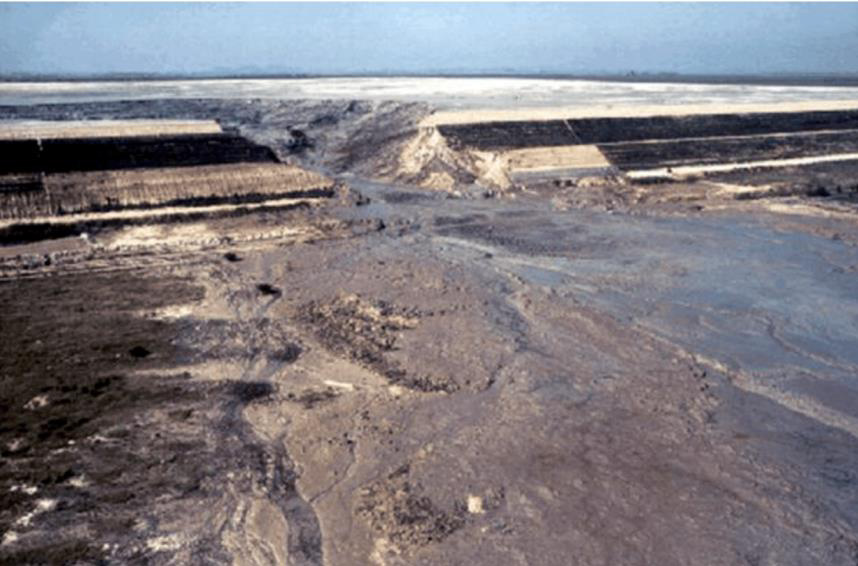
The toxic waste, with the arsenic, goes in the middle of the heap – marked PAF.
It’s surrounded by the larger chunks of clean rock that was taken out to get to the gold seam. Unlike the picture shown, the toxic waste will likely make up more than half of the total waste.
Once completed, the heap is capped with gravel and clay, to protect from air and water. However.
The Snowy River resource 2022 application admits that: “Typically, these waste heaps are suited to arid conditions, and it is not known if there are examples of this method of waste disposal by a modern hard rock mining operation being used in NZ or the West Coast.”
What do we have in the bay? High rainfall, temperate climate.
It then admits that oxidation cannot be prevented – which leads to acidification.
And it notes the waste heap becomes unstable at 40 % saturation
So ‘we don’t know’, acidification will happen, and when wet it’s unstable.
If the clay cracks, or a sink hole opens up underneath it, it is open to speculation that anyone would be able to stop it in time.

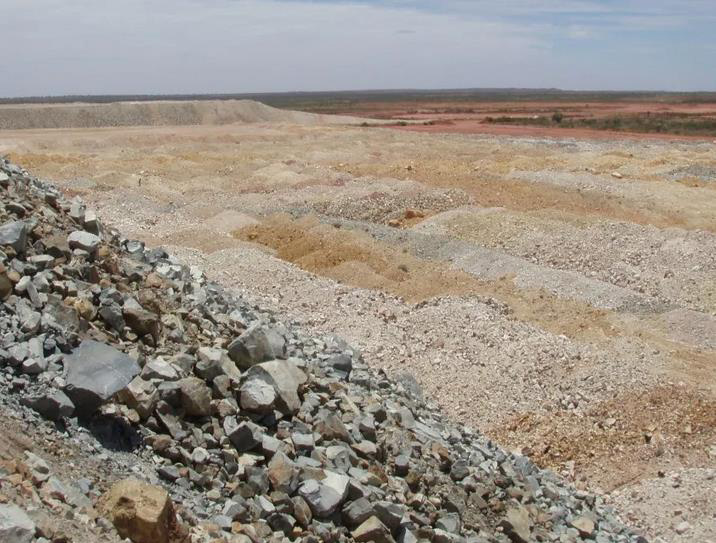
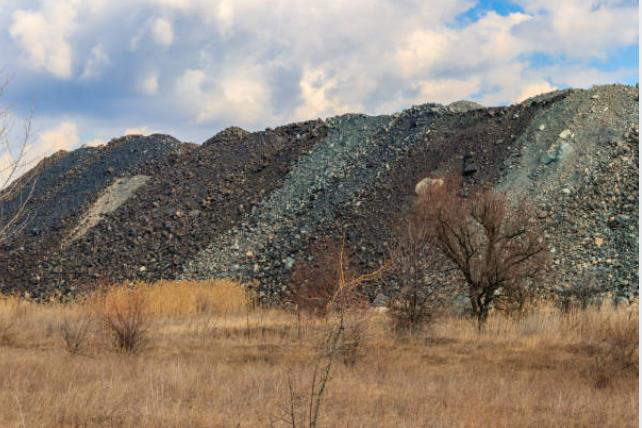
What If’s
It’s not uncommon for mining companies to lose money and go bust. They start because gold price good, then 10y down the track they go belly up.
Siren’s financial situation is unknown. What happens to the waste heap if the mining company goes under before it gets capped? Who picks up the tab?
Just to be clear. When Paul Angus says they’re not planning to use cyanide treatment here, that they’ll be using flotation, he doesn’t mean they’ll use flotation instead. They will use cyanide treatment, because that’s what comes after flotation. He’s just saying they plan to do that somewhere else.
The problem is, things often change once mining starts.
Cyanide treatment

(former environmental technician, Oceana Gold’s Reefton operation) has observed that once a mine is permitted, many of the conditions of the permit are modified without public consultation.” “The permit holders exaggerate employment and financial benefits, both local and to the country, ignoring that most of the profit goes overseas.” Snowy River also planned to do cyanide processing elsewhere. But once underway they applied to do it at Snowy River.
The company doing the mining won’t be Siren Gold – they’ve said that. They simply don’t know, or control, what the mining company will do down the track. They’ll just be on-selling the permits they have, and after that things can change.

Cyanide Waste & Plant
The cyanide process produces waste contaminated with cyanide, caustic soda and sulfuric acid. It’s so toxic it has to be pumped back into the mine when they’re done. That’s probably why Siren is insisting they are not doing it here.
Once the mine closes, the ground water returns to its natural level. The Snowy River application states that when the water level gets higher than the tunnel entrances, the contaminants can seep out.
Also of concern is that typical consents already allow discharge of contaminant liquids to rivers:
To discharge surface water, groundwater, and contaminants to land at the Snowy River site (being water associated with drilling, underground operations, decline development, stormwater from the portal area, waste rock stack, ore stockpile and infrastructure area) in circumstances that will result in that water and contaminant entering the Snowy River.
E.g. Arsenic can typically be discharged at 0.1mg/L, even though the safe limit for drinking water is 0.01mg/L. The safe limit for aquatic creatures is a tenth of that.
Typical discharge consent |
“To discharge surface water, groundwater, and contaminants to land at the Snowy River site (being water associated with drilling, underground operations, decline development, stormwater from the portal area, waste rock stack, ore stockpile and infrastructure area) in circumstances that will result in that water and contaminant entering the Snowy River.” |
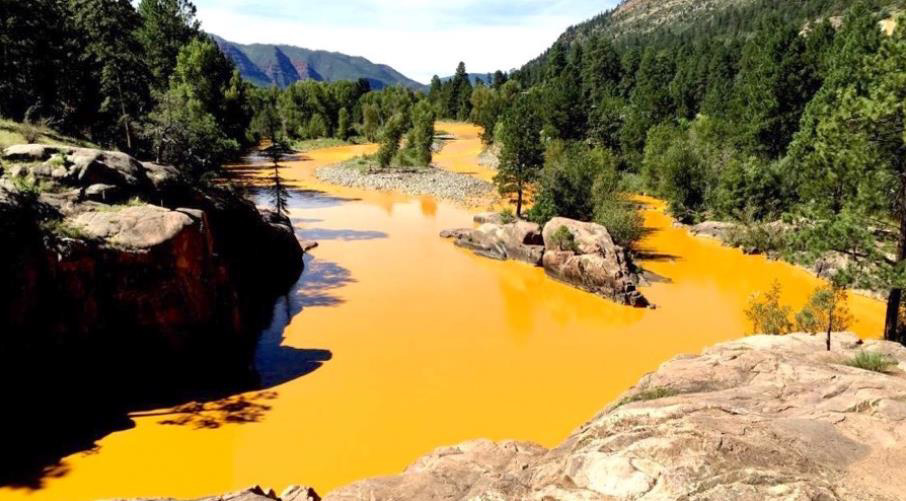
Around the world, there has been failure after failure of waste heaps and ponds.
Mistakes happen, weather events cause damage, and sometimes there is deliberate breaching of consents. Oceania Gold Reefton were successfully prosecuted for deliberately cutting a channel in their pit wall to drain the pit after it flooded. They were fined just $24k – unphased “cost of mining”.
In most cases, it is the local community who pays for the clean-up. Privatise the profit; socialise the cost.
Gerald Freeman: “A common factor in mining accidents and malpractice is greed, and the management at Reefton were on big performance bonuses.”
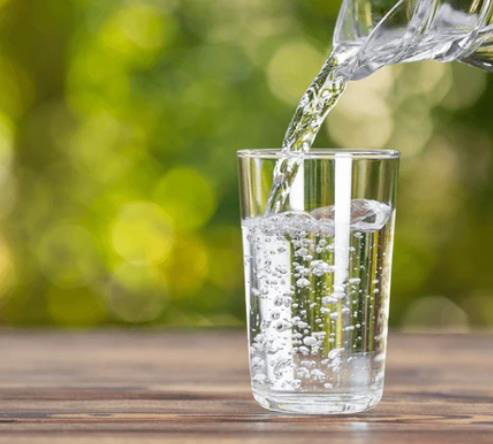
Is it worth the risk
clean water or $$$$
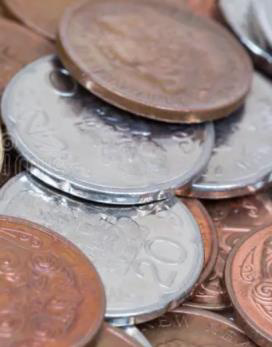
Conclusions
A foreign mining company just wants the gold. It’s in their interest to spend as little as possible on dealing safely with waste. What we get is 33 cents per person in total (in mining royalties, for every New Zealander), and the risk of permanent pollution to our land, air and water. The question is, is that worth the risk?
